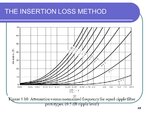Monzerje
Junior Member level 3
- Joined
- Oct 22, 2017
- Messages
- 28
- Helped
- 0
- Reputation
- 0
- Reaction score
- 0
- Trophy points
- 1
- Location
- Kuala Lumpur, Malaysia
- Activity points
- 244
Hi guys
I am designing an analog bandpass filter, and I am trying to determine the order of the filter, but I do not know how to calculate the passband and stopband attenuations, and what are the passband and stopband frequencies. The filter details are mentioned below:
F1= 27.5 GHz
F2= 31.225 GHz
Fc= 29.3625 GHz
BW= 3.725 GHz
I am designing an analog bandpass filter, and I am trying to determine the order of the filter, but I do not know how to calculate the passband and stopband attenuations, and what are the passband and stopband frequencies. The filter details are mentioned below:
F1= 27.5 GHz
F2= 31.225 GHz
Fc= 29.3625 GHz
BW= 3.725 GHz



